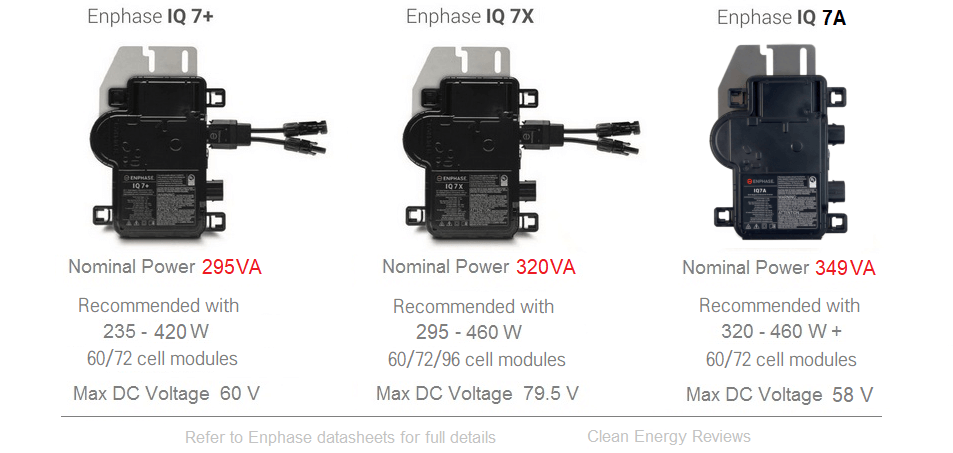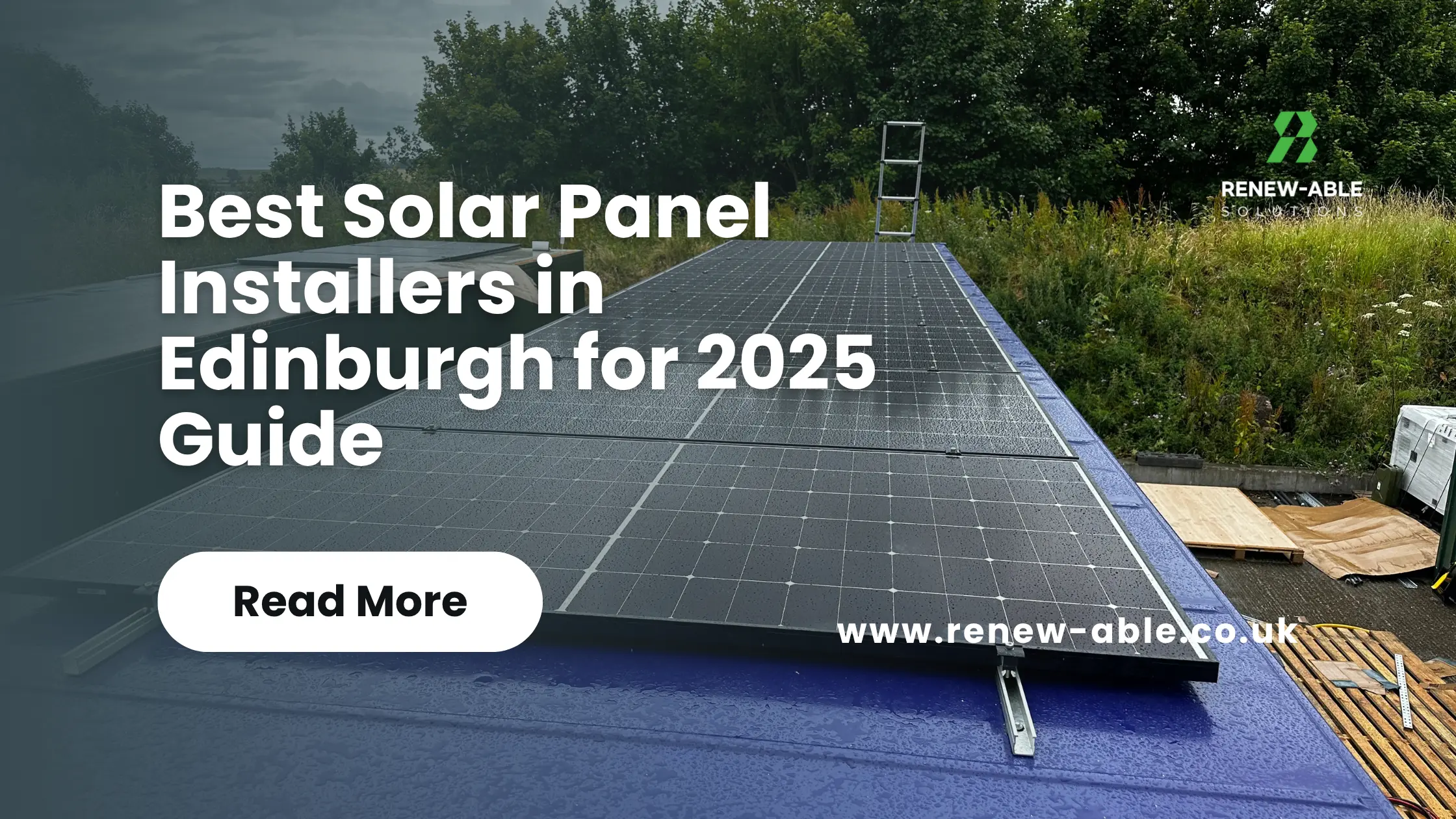
IQ 7A
The smart-grid-enabled Enphase IQ 7A™ microinverter is the high-performance version of the seventh-generation IQ platform and is designed for 60-cell/120 half-cell and 72-cell/144 half-cell modules. Like the IQ 7, IQ 7+ and IQ7X models, its polymer housing and revolutionary wiring system simplify installation.
As part of Enphase’s IQ system, it integrates easily with the Gateway-S™ and Enphase™ monitoring and analysis software.
Enphase IQ7A Micro Inverter
FEATURES
- 366 VA MAX. OUTPUT
- 295–460 W+ RECOMMENDED MODULE OUTPUT
- HALF-CELL AND BIFACIAL COMPATIBLE
- 18–58 V OPERATING VOLTAGE RANGE
- Optimised for high-performance modules with 60 cells/120 half-cells and 72 cells/144 half-cells
- Maximum output: 366 VA WITH 230 VAC
- High EU efficiency of 96.5%
- Over 1 million test hours in total
- Double insulated IP67 housing, protection class II
- Lightweight and simple construction
- Faster to install with better, lightweight 2-wire cable
- Safe with integrated quick disconnect
If you want to understand the difference between an inverter & a micro inverter read our in depth article here.
Enphase IQ7A can be bought to be fitting to any solar panel or for the ultimate time saver you can also buy pre-installed on SunPowers Maxeon 6 panels.
We believe that Micro Inverters are a better solution than a standard string inverter due to being able to monitor panel performance rather than array output. Inverters and Micro Inverters each have pro’s and cons but we strongly believe that the micro inverter gives a better performance for optimisation and energy losses along with monitoring of the whole system.
Micro inverters are a great alternative to the common ‘string’ solar inverter and are used in over half of all solar installations in the UK. Micro inverters, also known as micros, have several advantages over string solar inverters but a marginally higher upfront cost. In this article, we examine whether it is worth paying extra and what advantages micro inverters have over common string inverters. For those new to solar learn the basics of how solar works here.
Enphase Energy founded in 2006 has long been regarded as the world leading micro inverter manufacturer. Based in the US, Enphase launched the first micro inverter, the M175 in 2008 but it wasn’t until the next-gen M190 was launched in 2009 that sales really took off. Ever since Enphase has established itself as an industry leader in micro inverter technology and have a huge market share in North America. Sales in other regions such as Europe and in Australia have been low in comparison but are growing as both consumers and installers realise the many benefits of micro inverters.
What is a Micro Inverter?

A micro inverter is a very small inverter designed to be attached to each individual solar panel. This is much different to common string solar inverters which are usually located on a wall some distance from the string of solar panels and connected via DC cable. In string inverter systems, DC power from the string of the panels is then converted to AC at the inverter. Since micro Inverters are attached to every solar panel, each panel works independently from the rest of the solar array and DC power is converted to AC immediately on the roof. Some solar panels are also available with factory installed micro inverters, these are referred to as AC solar modules which we discuss in detail later.
Note: most benefits of micro inverters only apply to high-quality micro inverters such as those from Enphase Energy. Unknown or poor quality micros should be avoided due to the history of high failure rates and poor service.
Advantages of Micro Inverters
The main advantage of micro inverters in that each panel is monitored and optimized individually to generate maximum power. Solar panels can generate different amounts of power due to a number of reasons such as shading, dirt and mismatch as explained in detail below. In a standard string installation, the panels are linked together in series and the power output of the entire string can be greatly reduced by a single poor performing, shaded or dirty panel. However, using micro’s can overcome this and help avoid the many reasons solar systems can under-perform including:
- Shading – Trees, buildings, poles, wires, antennas, or rooftop structures
- Soiling – Dust, snow, bird droppings or birds
- Panel mismatch – various manufacturing tolerances
- Panel faults – micro cracking, hot spots or water ingress
- Temperature difference – thermal mismatch at different times of the day
- Panel Ageing – Panel degradation at different rates over time
- No PID – Eliminates Potential Induced degradation
- Odd roof layouts – Panels mounted at multiple orientations and angles
- Small roof – Roof area’s which can only fit a small number of panels
Considering the issues listed above, micro inverters can significantly improve performance as they allow all panels to operate at their maximum power point and not be affected by the lower performance of other panels. Another advantage of micro’s is the ability to locate panels on multiple sections of complex roof layouts with different orientations and tilt angles. Unlike string inverters, micro inverters are not restricted to panel placement which is generally limited to two or three different orientations. String inverters generally have only 2 string inputs (MPPT’s) and thus can only work with two groups of panels. Furthermore, the strings must have enough voltage to operate the inverter which means there typically need to be at least four panels in a string. Micro inverter systems are not restricted by any of these limitations.
Other advantages of micro Inverters
- No single point of failure
- Not limited by string voltages
- Easily expanded with different or newer panels
Micro inverter systems also have no single point of failure, which is particularly important in a large system with many panels. This means that unlike with string inverter systems, if one panel or micro inverter has a serious fault the rest of the system is unaffected and it doesn’t result in complete loss of generation.
Enphase Micro Inverter Range
Enphase Energy now has two families of micro inverters, the current seventh-generation IQ7 series and the new eighth-generation IQ8 series. Currently, the IQ8 series is only available in North America and are available in a large range of sizes to suit specific panel sizes and voltages, in particular, the more powerful commercial solar panels rated up to 550W. Release dates for other countries is still pending.
IQ7 Series
The IQ7 series has been around since 2018 and several new variations have been released over the years, the latest being the more powerful smart grid-ready IQ7A micro inverter. Due to increasingly larger and more powerful solar panels coming into the market, the IQ7A has a higher continuous power rating of 349VA, up from 320V on the IQ7X. However, unlike the IQ7X, the maximum DC input voltage is limited to 58V, which is compatible with the latest 60 and 72 cell, or 120 and 144 half-cut high powered solar panels up to 460W. The 96 cell panels, such as those from Sunpower and Panasonic, are only compatible with the IQ7X.

New IQ8 Series
The eighth-generation micro inverters from Enphase are finally available and are packed with innovations to enable advanced grid forming functions and precise power control. Claimed as “the industry’s first grid-forming microinverters with split-phase power conversion capability”, the IQ8 range is available in a large range of sizes from 240VA up to 380VA to suit almost every panel type from the old generation 60-cell panels all the way up to the latest powerful 540W + panels used for large commercial installations.

Where the IQ8 series really shines in is speed and accuracy thanks to the “proprietary application-specific integrated circuit (ASIC)” which enables the micro inverter to become a rapid load-following inverter to allow seamless operation in both on-grid and off-grid modes. More notably, the new IQ8 series is designed to work in conjunction with the new range of Enphase battery storage equipment including, the IQ Battery, IQ Gateway, and IQ system controller described in more detail below.
System and panel level monitoring

Micro inverters offer better system monitoring compared to string inverters as each panel can be monitored individually. For common string inverter systems additional panel mounted ‘DC optimizers’ such as those from Tigo or SolarEdge can also enable individual panel level monitoring and optimisation.

With micros an owner can see the performance of the system as a whole, plus at the individual panel level. Also, the installer can have a separate login where they can monitor all their systems at a panel level and are warned when any panels are under-performing which can prevent system downtime and help with any warranty claims. Enphase Energy has the Envoy monitoring hub for all systems to enable setup, commissioning and remote monitoring. They also monitor all registered systems worldwide from the US headquarters which provides valuable information to monitor fault conditions and continue to improve their products.

Reliability
Most micro inverters have been rigorously tested in extreme weather and climate conditions. These units are designed to last the life of a solar panel and generally have a warranty to back that up. Many micro inverters such as those from Enphase come with a 25-year warranty, which is far longer than the standard 10 years for most string inverters. Again, bear in mind that this is only relevant with high-quality micro inverters such as those from Enphase. To date, there have been very low failure rates reported from our solar specialists, and Enphase has proven to be one of the most reliable
Get in touch today to discuss your requirements.








